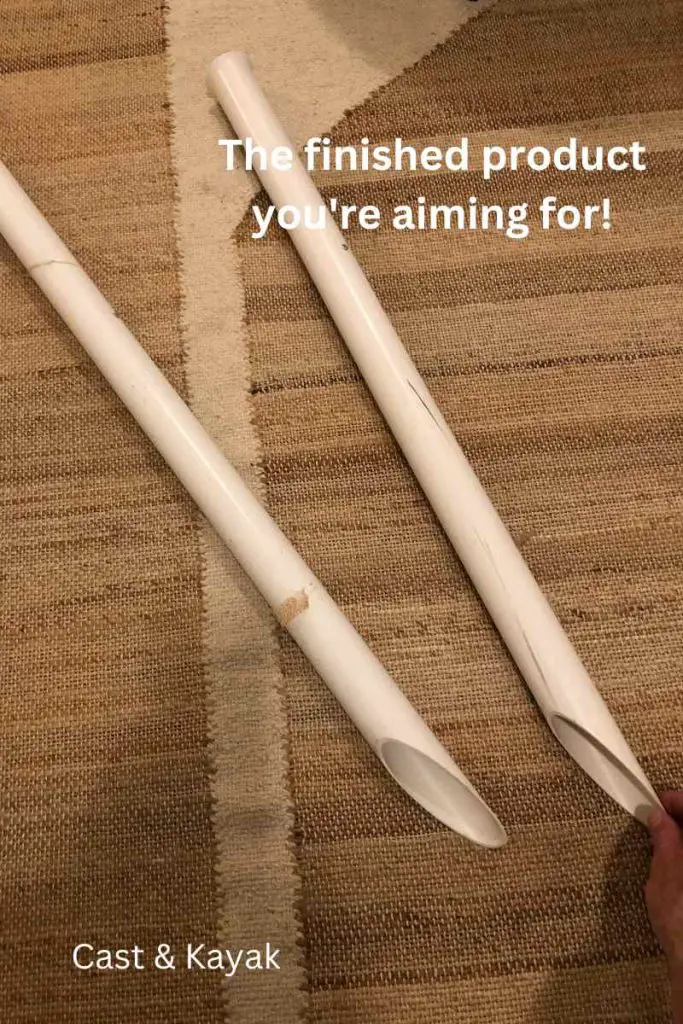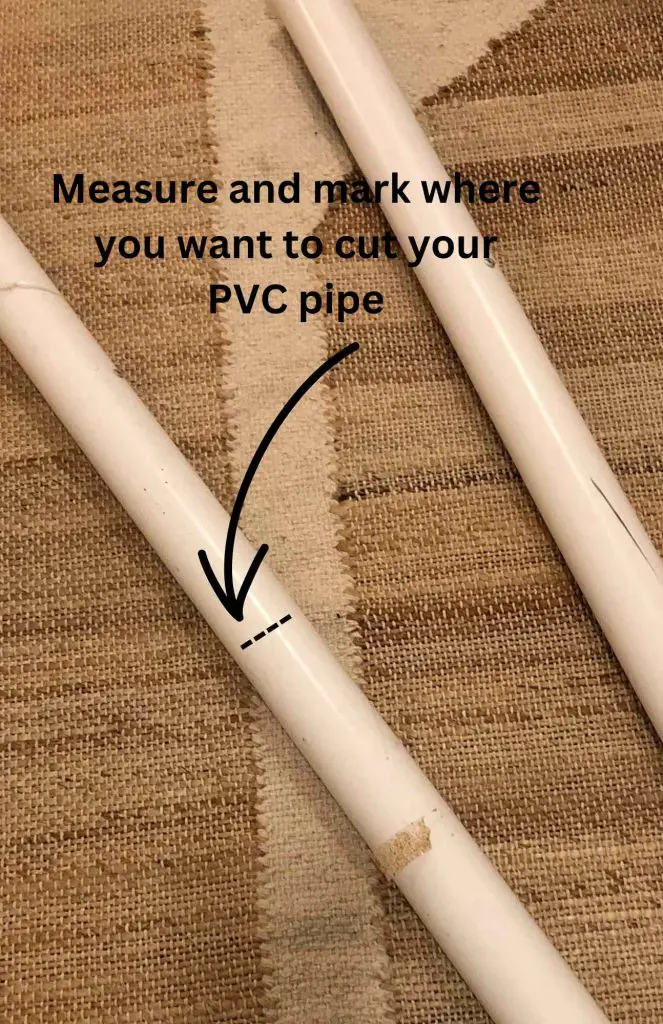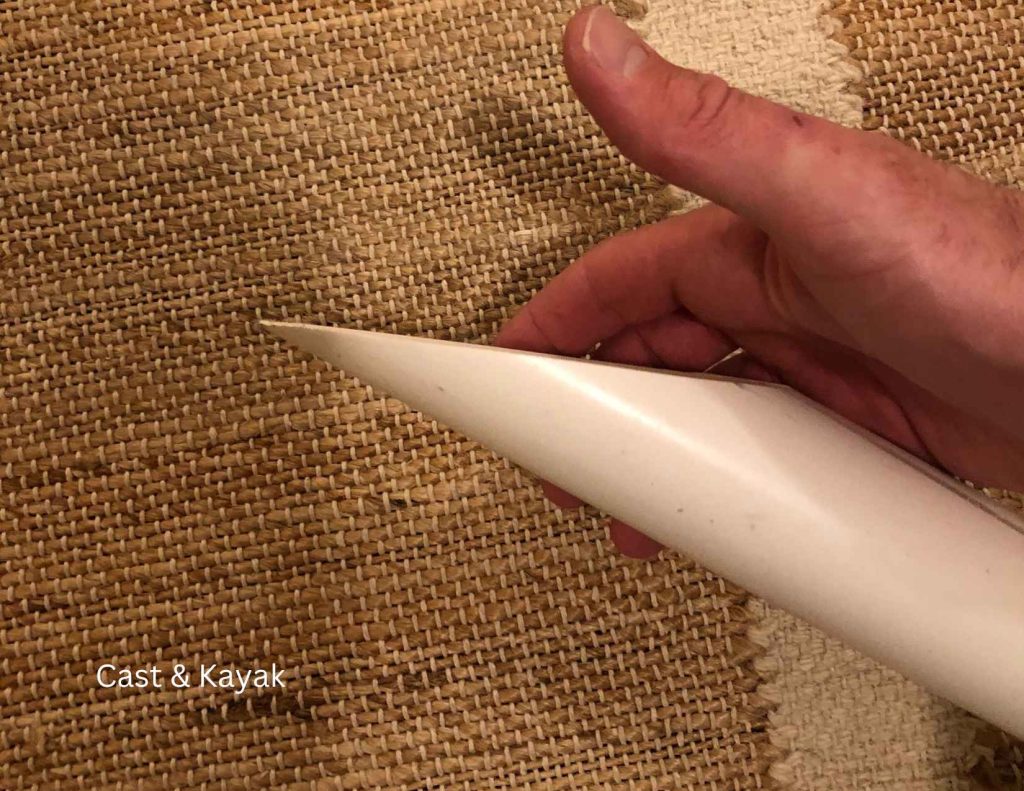
A sand spike is a very important piece of kit. And it pays to have a few on hand.
But PVC rod holders can get pretty expensive!
And they’re just a piece of cut plastic tubing, right? Can’t you just make your own?
Yes, but there are some important features you need to create for a successful, effective sand spike rod holder for the beach.
I’ve built a few of these in my time for myself and also helped friends build theirs too – each one has been a great success on the beach with good stability and ease of use… and cheap!
So let’s have a look at how you make a DIY PVC surf fishing rod holder…
If you really can’t be bothered to make your own – here’s a list of what I think are the top sand spikes available now.
Materials and tools needed to make a surf fishing rod holder or sand spike?
- PVC pipe (1.5 inches in diameter and 3-4 feet long) Check that your rod butt will fit before you buy the pipe!
- Screw with a nut (choose a screw just a little longer than the diameter of the outside of the pipe so you can attach the screw to it)
- Measuring tape
- Sandpaper
- A drill
Easy steps to make a rod holder out of PVC pipe – with pictures!
Now we have the materials to make a PVC rod holder, here are the step-by-step instructions to make an effective rod holder for the beach.
These are the steps I follow every time I have to make a new rod holder.
Step 1: Measure and cut the PVC pipe

- Measure and mark the PVC pipe at a 48-inch interval to mark the bottom of the sand spike.
- Measure 6 or so inches up from this 48-inch mark and mark the pipe again.
- Cut the pipe at a 45-degree angle from your 48-inch mark (the bottom), up to the second mark to create the slanted point at the bottom of the PVC pipe rod holder. (see photo to help)
- You want to make sure the end of the pipe that will go in the sand is cut at a slant through the diameter of the pipe…
- This creates a nice sharp point that makes it easy to push effortlessly into the sand.
Result: you should be left with a 48-inch length of PVC pipe with a pointed end from the slanted cut you made from the bottom upwards.

Step 2: Sand the PVC pipes
Now, be careful of the pointed end you’ve just cut – it can be very sharp!
I like to take a bit of sandpaper to this now, and there are a couple of steps for this.
- Get an old wooden block – the size of a smartphone works well.
- Start with coarser sandpaper to ‘knock off’ and sand down the sharper edges.
- Replace the coarse sandpaper with slightly finer sandpaper to neaten up and strands or ridges in the cut end.
Result: you should be left with a smoother cut end that isn’t going to slice your finger when you handle it, but will still pierce the sand easily.
Given up yet? You can always take the simple rout 🙂 Here are the top sand spikes available now.
Step 3: Drill a hole in one of the PVC pipes
Next we want to make a screw ‘shelf’ for your rod handle butt to rest on inside the PVC pipe sand spike.
Again, there are a few steps here so follow the instructions carefully…
- Measure your rod butts against the pipe.
- Mark the place for the screw that allows your reel to sit a little above the lip of the pipe.
- I don’t like my reel foot to touch and sit on the pipe lip. The constant bashing of the reel foot against the lip, when you place the reel in the pipe, could damage the reel over time.
- I also like to measure all of my rods that might sit in the rod holder – to make sure the measurement works for all my rods.
- Once you’ve marked your spot, using a drill, drill a hole through the center of the PVC pipe right through to the other side.
- Make the hole large enough to fit the screw through.
Result: you should have a hole large enough to fit a screw through both sides of your PVC rod holder, at a distance from the top lip of the rod holder so that all your reels sit slightly above the lip.

Step 4: Insert the screw
- Insert the screw through the hole in the PVC pipe.
- The screw should be long enough to go through both PVC pipes.
- Then fix the nut onto the screw and tighten.
Result: you should have a screw going through both sides and the middle of your PVC rod holder, at a distance from the top lip of the rod holder so that all your reels sit comfortably above the lip.
Step 5: Test the sand spike rod holder
Now time to test your little beauty! I like to take my new creation to the beach asap to break in the new PVC rod holders.
- Insert the sand spike rod holder into the sand at the beach.
- Push deeply into the sand.
- Test your different rods in the rod holder.
- Test different depths and angles too – I tend to have mine dead straight upright.
- Have a test cast and sit your rods in the new holder.
Click here for a guide on how to get the best out of using your PV sand spike rod holder.
BONUS STEP!!
Do you want a nice flared end to your rod holder? Click here to get step-by-step instructions for how to flare your rod holder.
Congratulations! You made a DIY PVC surf fishing rod holder
You have successfully made a PVC sand spike rod holder using just one tube of PVC pipe and a screw.
Now you can enjoy fishing at the beach without having to hold your rod the whole time.
You are a boss and no one can stop you!
